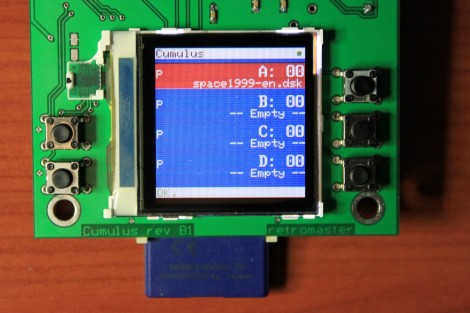
This device is called the Cumulus and it’s used to emulate the floppy disk hardware for Oric-1 and Oric Atmos computers. These 1980’s era computers included an expansion slot to which you could connect a floppy drive. That module, called a Microdisc system, also included the driver circuit which means you can’t just use a modern-day floppy drive as a replacement. [Retromaster] sidestepped the need for magnetic media all together by building an SD card interface which emulates the original module. We can tell by the use of a color screen and clean board layout that a lot of love went into the project. A CPLD implements the communications protocol used by the Microdisc system and creates all of the registers that would have been found on the original hardware. A PIC takes care of the SD card communications and the user interface.
With the exception of comforting noises, we’d bet there are few who have fond memories of using floppy disks. No wonder we’ve been seeing hacks to replace them quite a bit lately.
















Nice. He also has a really good writeup of his PCB fabrication techniques that are well worth a read also.
It is also a good note that backing up old floppies can be an asset and a treasure trove for future hackers-to-be.And with current media capacity, that is easier than ever as well as the ability to repair corrupt files in a moments notice :D.
Oric lives! Atmos rules! Color clash ftw! Xenon, the letter Q and, happ dogs and char harriers, easily within reach! Paper 5;ink 3;
For some reason I cannot articulate, this project makes me very happy. It’s all the weirder for the fact I’ve never used an Oric…
Hi everybody,
You may be interested in knowing that after some false starts, high hopes and tears, we seem to finally be going somewhere with this project.
We have opened preorders for the Cumulus device, you can read more on the official thread: http://forum.defence-force.org/viewtopic.php?f=23&t=1012
(And yes, I’m posting similar messages on all Cumulus related posts, mostly because it’s probably going to be a one of a kind event, I doubt we will do a second batch after that, way too much of a hassle to organize!)